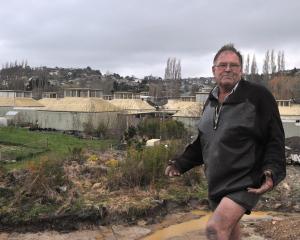A plan to "freeze" Queenstown Lakes District's urban boundaries was flawed, unnecessary, expensive and too restrictive, a plan change hearing was told yesterday.
Lawyer Warwick Goldsmith represented 61 submitters against Plan Change 30 Urban Boundary Framework before panel of commissioners Lyal Cocks, Mike Garland and Gillian Macleod in Queenstown.
Mr Goldsmith said the group, including landowners Mt Cardrona Station, Jacks Point Ltd, Quail Rise Estate Ltd and Cardrona Valley Residents and Ratepayers Society Inc, was "very concerned" with the proposed way of setting urban boundaries.
He said the council was planning to take away landowners' rights to their own land use by imposing unnecessary new controls on development.
The plan change was "expensive without achieving much" and the costs and benefits had not been analysed fully, he said.
"We believe it is ... flawed, highly restrictive and there is no evidence to support it. In fact, there is a lack of evidence that there is a problem [of urban sprawl] in the Rural General zone," Mr Goldsmith said.
"Plan change 30 ... [presumes] the existing district plan is allowing growth which is creating adverse effects and needing to be contained. I'm here to challenge that ... the existing district plan is fine and we don't need plan change 30," he said.
The plan change was inconsistent with the existing district plan and would cause problems for those deciding on resource consent applications. It was a significant Rural General plan change in disguise, he said.
"Plan change 30 seeks to prevent any new residential growth outside existing urban boundaries . . . for at least 20 years without consideration of a range of issues. That affects every landowner," he said.
The plan change justified the restrictions by claiming there was sufficient land available within the existing urban boundaries for at least 20 years.
Mr Goldsmith said the council had no guarantee landowners would release vacant zoned land to the market during that time.
The difference between urban growth and rural subdivision needed to be defined, he said.
"Creeping" growth could be managed cost-effectively by preventing developers connecting to council controlled water schemes, he said.
The plan change was imposing a "one size fits all" method without recognising differences between settlements, he said. Boundaries around the district's 12 urban settlements could be set using individual plan changes.
Commissioner Macleod said the council needed to be "consistent rather than doing things in a piecemeal ad hoc way".
A total of 120 submissions were received on the plan change, of which only 23 supported or partly supported the proposals.
The hearing continues today and Monday.




